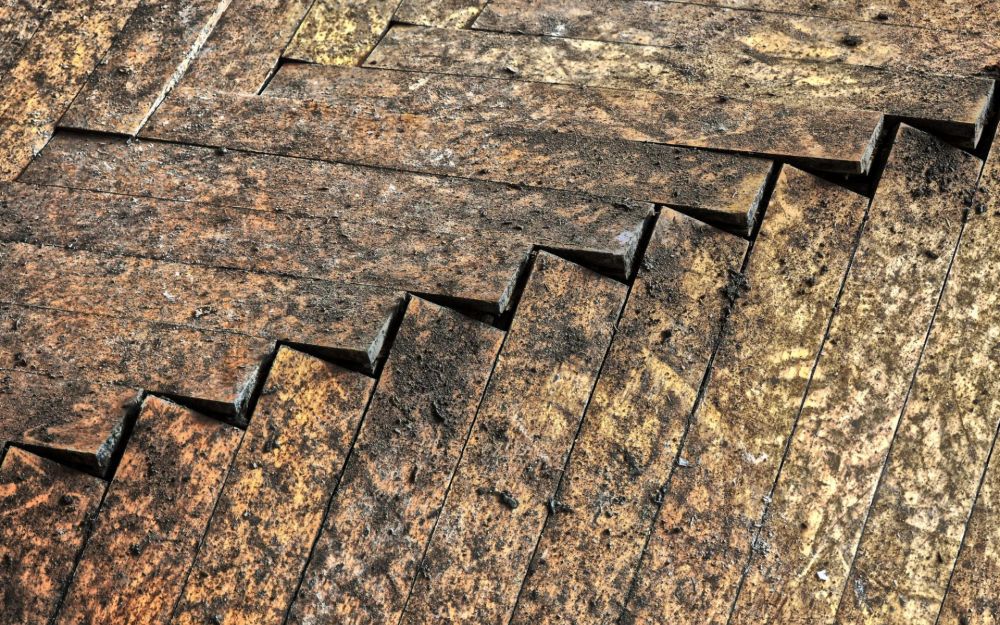What You Need to Know About Buying A House with Buckling Floors



Buying a fixer-upper versus a move-in ready home has the advantage of having lower upfront costs along with the possibility of much lower property taxes. Local taxing authorities base property taxes on the sales value of a home.
According to Realtor.com, about 60% of home buyers consider purchasing a home in need of repair and/or renovation.
When considering a fixer-upper, there is a difference between buying a home in need of cosmetic renovation versus a home in need of major repair. Signs of a home in need of major repairs including buckling floors, cracked or crumbling walls, or ill-fitting windows and/or doors.
These could be signs of a home that has foundation problems. A home’s foundation is critical to assuring that your home will stand for decades to come.
Though a problem, uneven floors don’t have to be a make-or-break. As with any fixer-upper, it can be a diamond in the rough.
Not Created Equal: The Right Fixer-Upper
When considering a fixer-upper the one thing you should keep in front of mind is: fixer-uppers are not created equal. There are great opportunities, and there are bad opportunities.
The best choices are homes that someone will want but don’t necessarily want now. A lot of homes spend extended periods of time in the market because of easily repairable imperfections, including peeling paint, old fixtures, or uneven floors and worn carpets. This is especially true of first-time home buyers.
They turn down a deal that can end up saving them money both upfront and in the long run. Money is made when you buy a home if you keep the resale of the renovated or repaired home in mind. Can you make money from buying this specific fixer-upper after renovations?
Even if you plan to live in the home yourself this helps you decide whether this a good investment.
Considerations
What makes the distinction between a bad opportunity and a shiny piece of coal?
- Location – You don’t want to buy a home across from a school, near a busy intersection, or around a landfill. The best places to look are in up-and-coming neighborhoods whose other homes are occupied and well-maintained.
- Floor Plan – Choose homes that have the ideal layout. This means the dining room is not the focal point, the kitchen has more than one entrance, and master bedrooms aren’t located at opposite ends of the house. Most families don’t appreciate rooms too far from that of their children. This may include you someday if you don’t have children already.
- Maintenance – What is the condition of the property?
- Easy fixes: installing new fixtures, fixing broken windows, patching walls (stripping wallpaper, painting, etc.), or replacing baseboards or trim, replacing subflooring or tiling uneven floor spaces in bathrooms, or refinishing floors.
- Hard fixes: Pouring concrete for driveways, etc., kitchen or bathroom remodels, reroofing, foundation repairs, adding a garage, or replacement and installation of all the windows in the home.
In this article, we focus on dealing with uneven flooring and repairing damaged flooring, as well as identifying whether the floors are an easy fix or a result of deeper foundation issues.
Common Causes of Buckling Floors
Walking on an uneven floor can feel like you’re walking a bit uphill. It’s not uncommon to experience this in older homes. When considering a home that needs floor repairs, you need to look at what’s causing the problem to determine costs.
Three causes of damaged flooring include:
- Soil Movement – Soil erosion and soil movement are natural phenomena. Shifting soil becomes a problem, however, when it causes your foundation to move with it. In this case, the floors are affected, making them lift or even sink.
- Damaged Foundation or Ill-Designed Home Structure – A damaged foundation can simply be a cause of age. An older home can have foundation troubles because a home’s foundation weakens over time. A weak foundation can be the result of a poorly designed foundation. A home with a weak foundation will often have warped, sloped, or buckled floors.
- Trapped Moisture – This is the most common cause of damaged flooring, especially with wood flooring. Excess moisture from a leaking pipe hidden behind a wall or even groundwater can cause the sub-flooring or wood beams to warp.
The above is mainly flooring problems that have to do with crawl space foundation issues. Other causes for raised floors can be as simple as problems with sub-flooring or joists. These are manageable to fix and can make a fixer-upper worth looking into.
Fixing Damaged Flooring
Deciding whether a home has loose or raised floors is worth considering. It’s good to look into what you would need to do to fix them. Here’s how to fix uneven floors.
For moisture issues, you’d need to control any sources of moisture from the damp earth, water intrusion, flooding, plumbing leaks, etc. Now, if the moisture is coming from a foundation that doesn’t drain properly, this is a bigger problem associated with more costs. Any damaged flooring might need to be replaced depending on the extent of the damage.
In the case of damage due to soil movement, a foundation repair specialist or contractor can determine whether the foundation is severely damaged or if the problem can be solved by redirecting any water away from the foundation. This can be done by simply installing spouts to prevent moisture accumulation.
Foundation damage can be more expensive, depending on the extent of the damage. The type of foundation can also affect pricing for foundation repair. This can include pumping grout into specific locations to raise the foundation back up to its original level or using floor jacks and foundation piercing.
Problems with sub-flooring or joists are an easier fix. With crowning or sagging floor joists, you can use a self-leveling product or shims between the plywood sub-flooring and shims. Bulging plywood could be simply tacked back into place, or it may need to be replaced.
The best way to determine the solution to damaged flooring is to get it inspected by a professional. This will help you determine costs and whether the fixer-upper is still in the game.
Repair Costs vs Buyer Savings
As shown above, the costs for repairing uneven flooring depend on the cause and the kind of flooring that needs replacing. Either way, the damaged flooring needs replacing.
To help calculate the costs for the fixer-upper you’re considering, here are the average costs for the repairs we’ve discussed so far.
With soil movement, the concrete slabs that make up the foundation shift. This usually calls for slab jacking or foundation piers. With slab jacking, the concrete is lifted and any voids are filled to raise the foundation back to the proper level. This repair starts at $2000 and up.
If the ground is too soft, helical piers may be used since they can be installed in undisturbed soil up to 20 feet below the home. Each pier is between $1500-$2000.
Replacing sub-flooring can run from $1,000-$12,000, with an average of about $2,800 per room. Repairing joists can be anywhere from $1,000-$2,000 for a 120-square-foot room.
The average cost of a sagging floor sits on an average of $6,500.
All said and done, this is where the averages stand for repairing floors:
- Foundational Issues: $5,000-$25,000
- Rotting Joists: $1,000-$10,000
- Damaged Sub-flooring: $1,000-$12,000
These costs can get confusing. The best way to lock down an accurate price for damaged flooring or uneven floor transitions is to call a foundation repair specialist or contractor to evaluate and give you a proper quote.
But this can help you draw out some estimates if you’re looking at several properties and want to narrow down your options.
Considering a Home with Flooring Troubles
When considering any fixer-upper, have the property appraised by a good inspector. Often, inspectors of various specialties are needed for a detailed big picture. When looking at a home, take note of all the signs that might hint at a deeper issue, such as buckling floors If you have doubts, call the appropriate inspector for that particular problem.
A professional will help give you an idea of what repairs need to be done so you can make an informed decision.
Fixer-uppers can be a great investment, with some saving you as much as 60%-80% of a move-in ready home. Even with flooring or foundation troubles, a fixer-upper can be a great investment that you can personalize to your needs and those of your family.
Bought a fixer-upper in need of repairs? Reach out to us to get a quote for your new home.

